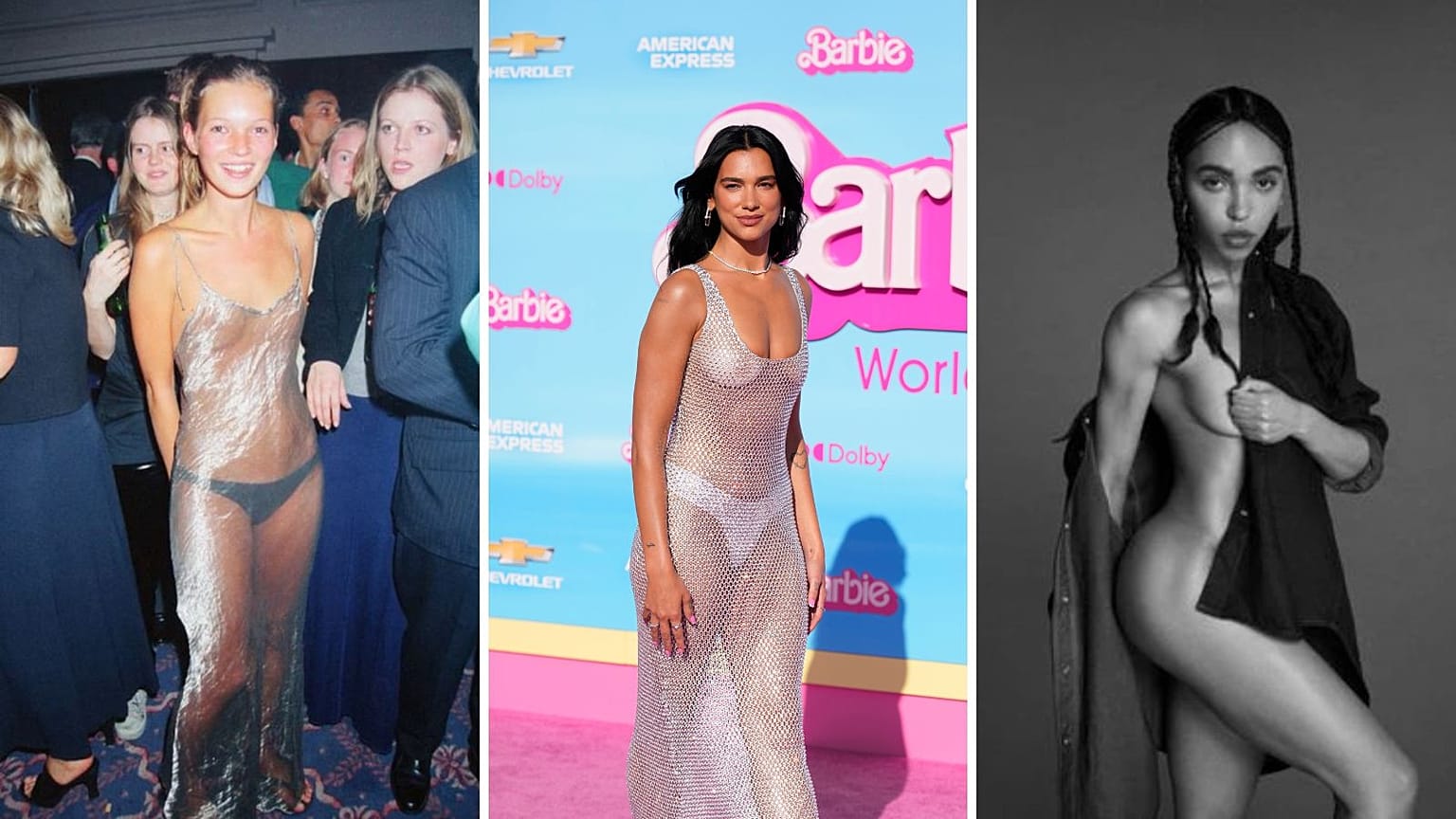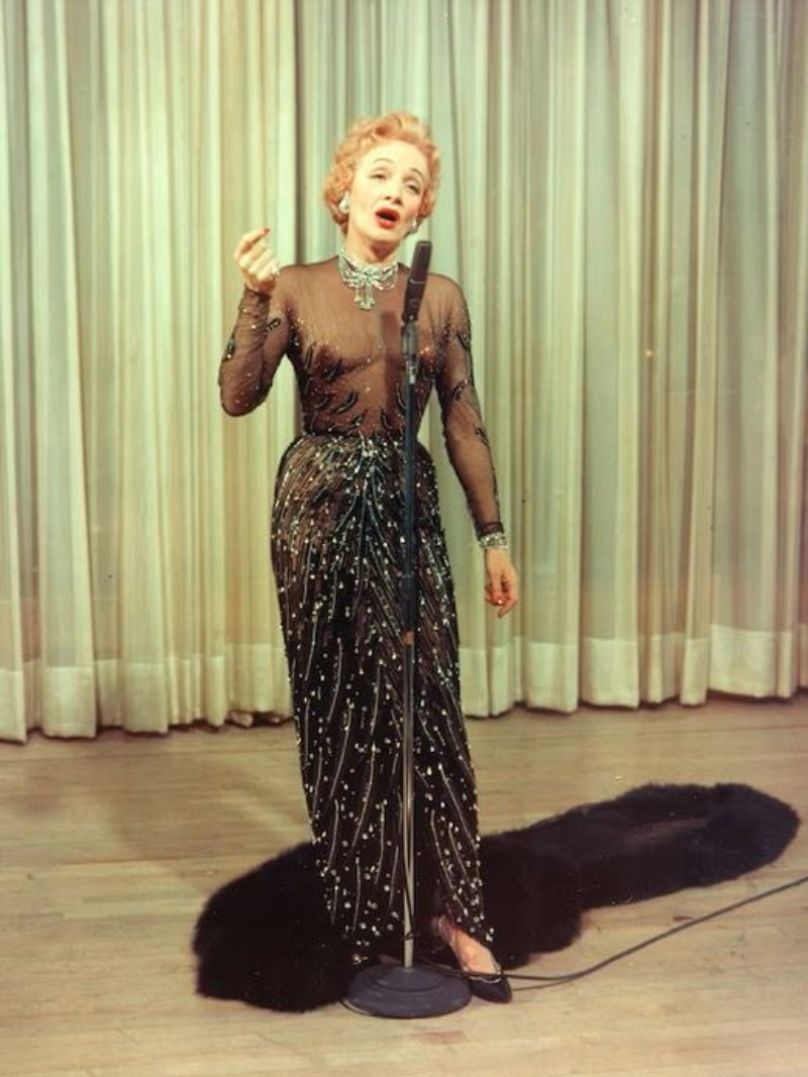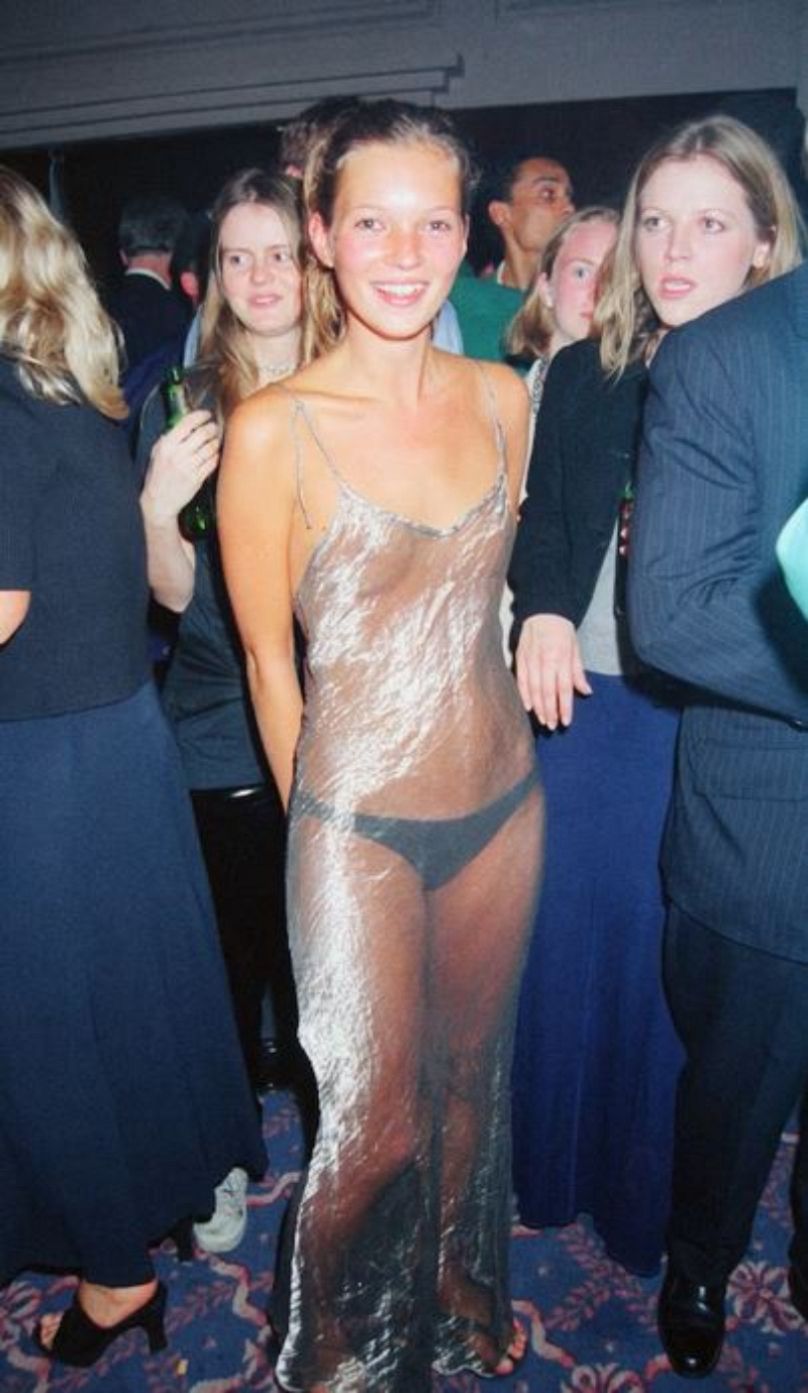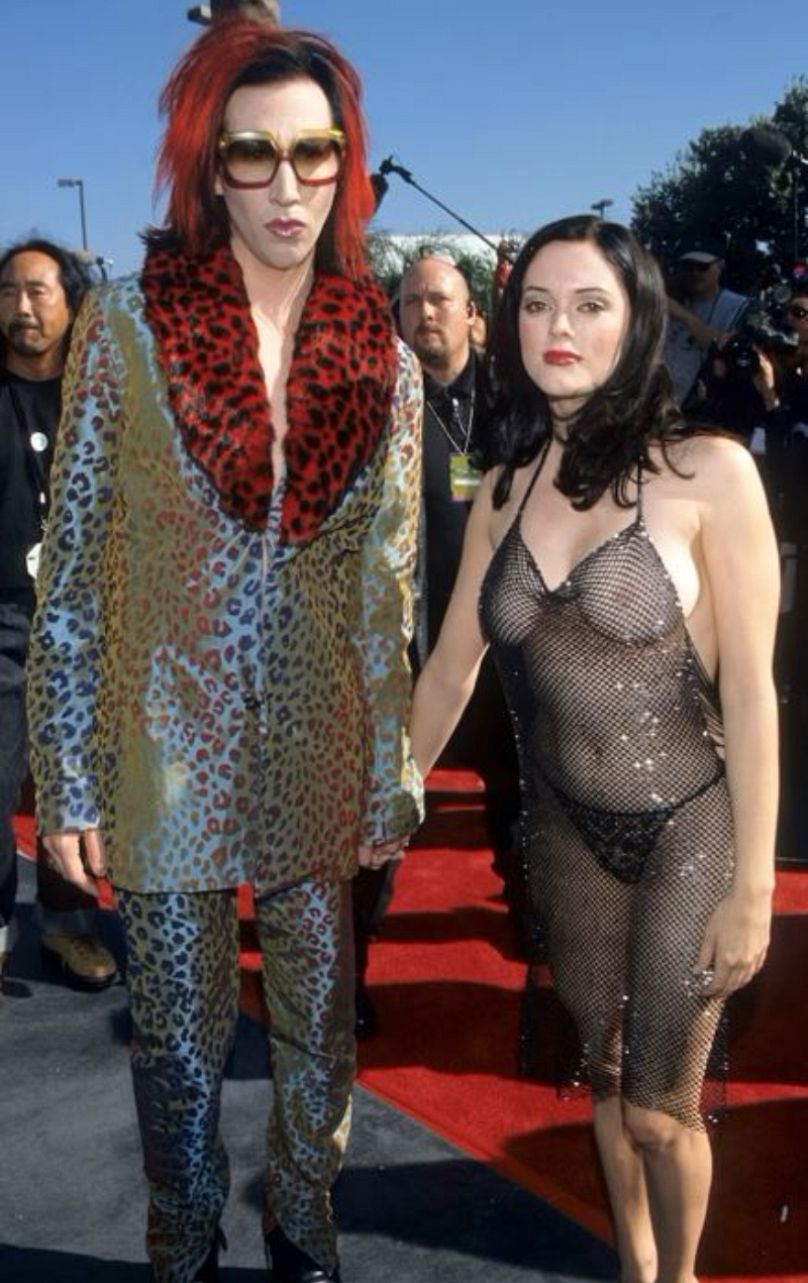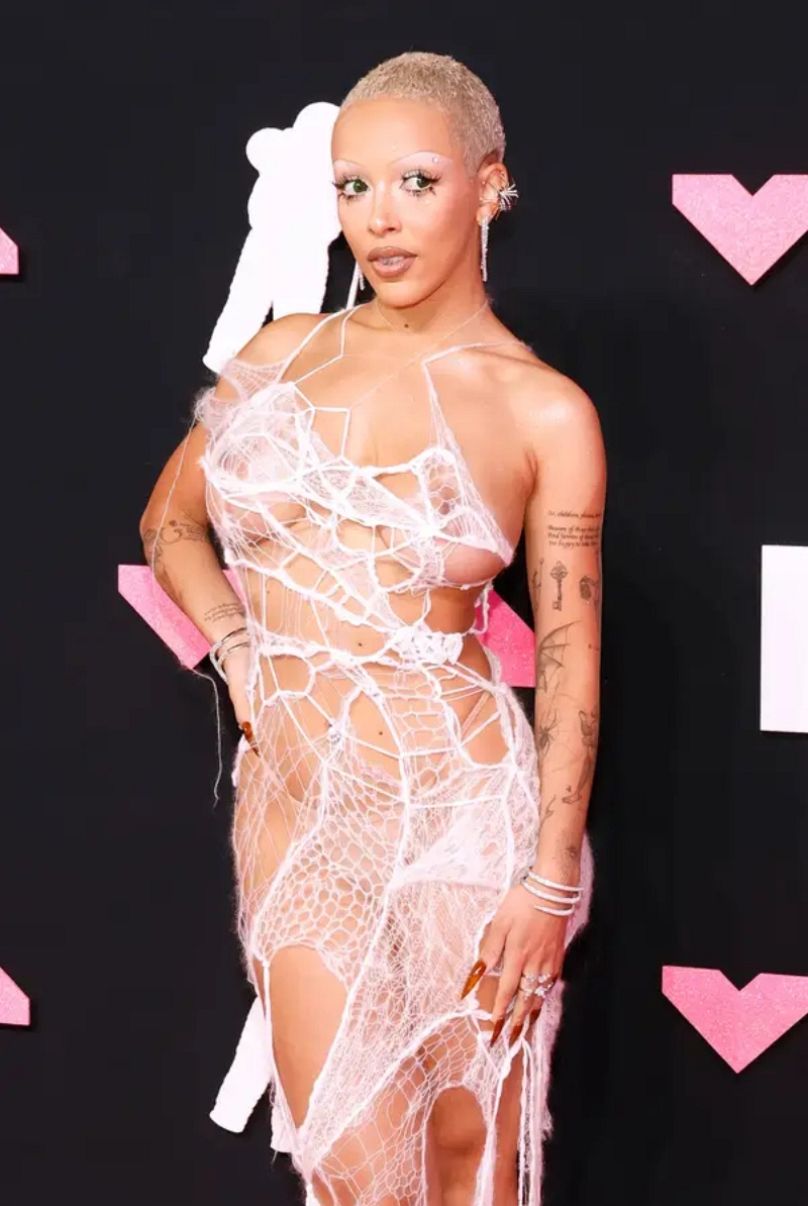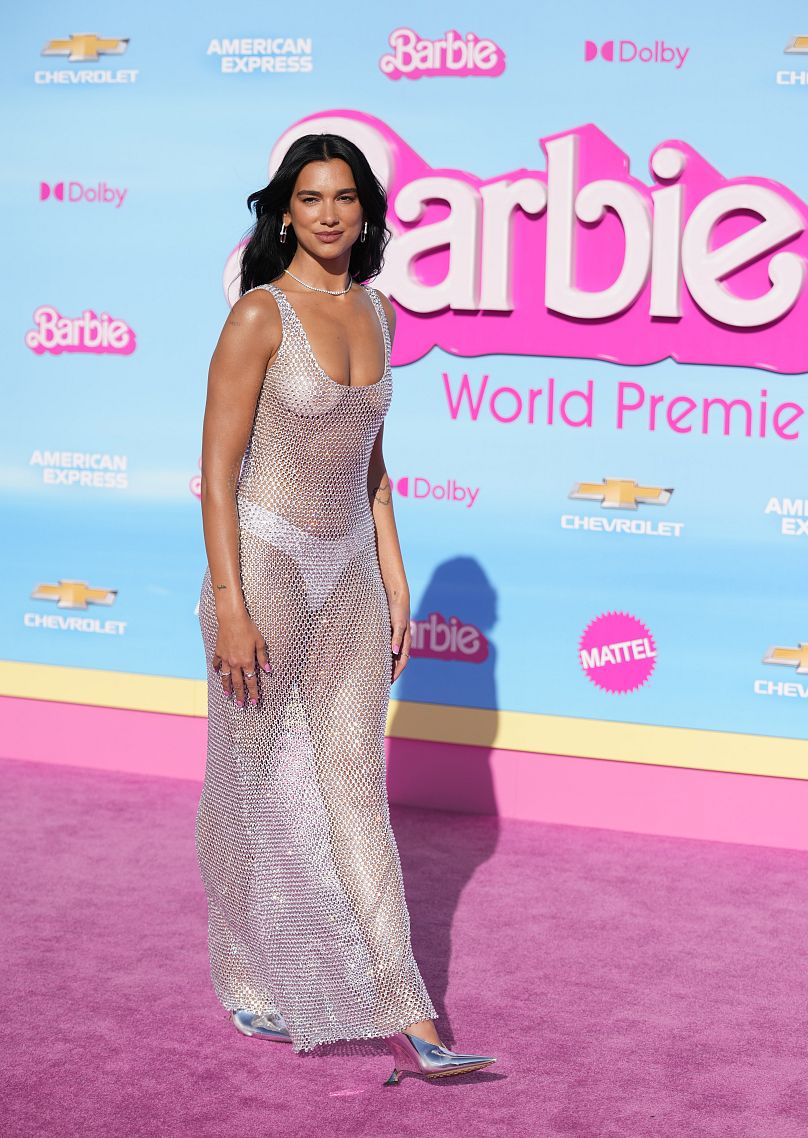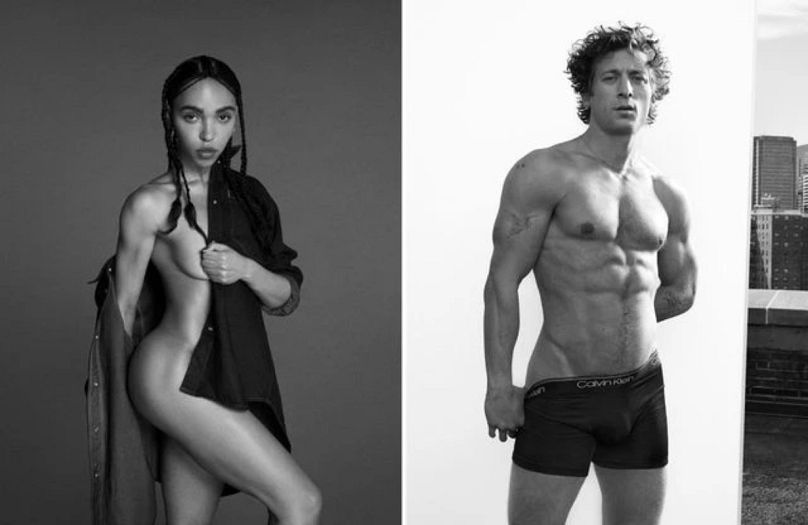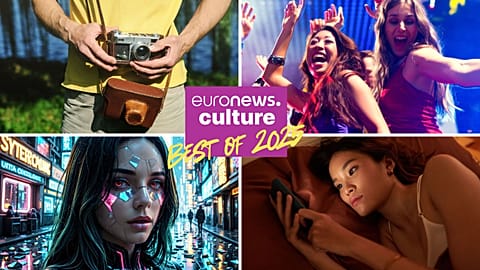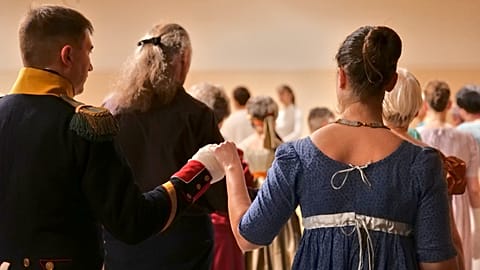Khloe Kardashian may be celebrated right now, but there's still a way to go. So, what is Free The Nipple and why are sexist double standards when it comes to teats still prevalent in 2024?
Khloe Kardashian is the latest celebrity to 'free the nipple', following the likes of Florence Pugh, Dua Lipa, and her own Kardashian sisters in embracing the growing movement that celebrates a woman's right to bare her breasts.
The 39-year-old Kardashian was photographed by Greg Swales in a photoshoot for Tmrw magazine wearing a sheer black lace vest which exposed her bare chest.
During the interview, she said: "It's so powerful, the older you get, how secure and comfortable you get within your skin and with people. I don't care who agrees with what I'm doing, you're just, you feel good."
The photo was posted on Instagram and users on the platform went crazy for it.
But where does the Free The Nipple movement come from, and why is it still a big deal when a female celebrity bares her chest?
What is Free The Nipple?
The Free The Nipple movement highlights the inherent injustice that men are allowed to appear topless in public while women are considered indecent for doing the same.
The campaign was created in 2012, when filmmaker Lina Esco filmed herself running topless through the streets of New York. As the documentary was being made, she posted teaser clips with the hashtag #FreeTheNipple. In 2013, Facebook removed these clips from its website for violating its guidelines, leading several celebrities (Rihanna, Chelsea Handler, amongst others) to post photos on social media to show their support of Esco's initiative.
Free The Nipple anchors itself in the topfreedom movement, a cultural and political campaign which seeks changes in laws to allow women to be topless in public – from allowing mothers to openly breastfeed in public to getting rid of restrictions and arrests when a woman shows her breasts in public.
Though the Free The Nipple movement has gained traction on social media over the last decade, celebrities have been calling out Western culture’s inherent sexualisation of women’s breasts for much longer.
Hollywood stars like Marlene Dietrich and Rita Hayworth opposed the conservative values of the 40s and 50s by showing their breasts in see-through tops and dresses in films and on stage.
Their fashion choices paved the way for the likes of Jane Fonda and Jane Birkin in the 60s, and in the 1990s wearing “naked dresses” on red carpets became popular.
Some of the most memorable outfits include those worn by Kate Moss, Rose McGowan, Shalom Harlow and Gwyneth Paltrow - who all donned translucent fabrics as a statement and marked the fashion scene in the 90s.
Still, despite countless feminist protests and braless celebrities on red carpets, today a non-male nipple is still, somehow, front-page news.
In 2022, actress Florence Pugh was at the heart of a shameful backlash when she wore a hot pink Valentino gown on the red carpet at Paris Fashion Week.
While most complimented her online, many men criticised the actor and her body, which led Pugh to hit back.
“What’s been interesting to watch and witness is just how easy it is for men to totally destroy a woman’s body, publicly, proudly, for everyone to see,” she wrote at the time.
“It isn’t the first time and certainly won’t be the last time a woman will hear what’s wrong with her body by a crowd of strangers, what’s worrying is just how vulgar some of you men can be."
"Thankfully, I’ve come to terms with the intricacies of my body that make me, me. I’m happy with all of the ‘flaws’ that I couldn’t bear to look at when I was 14.”
“What’s more concerning is…. Why are you so scared of breasts? Small? Large? Left? Right? Only one? Maybe none? What. Is. So. Terrifying.”
She concluded: “Grow up. Respect people. Respect bodies. Respect all women. Respect humans. Life will get a whole lot easier, I promise. And all because of two cute little nipples….”
Progress... with some caveats
Pugh’s message seems to have opened the nipplegates, as last year saw many celebs embrace the movement at red carpet events.
From Doja Cat at the 2023 VMAs, Charli XCX and Rina Sawayama at the Brit Awards to Maggie Rogers at Glamour’s Women of the Year event, the Free The Nipple movement was everywhere.
And who could forget how Dua Lipa stole the show with her sheer silver chain mail Bottega Veneta gown at the premiere of the Barbie movie in Los Angeles?
The growing ubiquity of these revealing fashion styles continues to challenge the received idea that showing nipple is contentious. More than that, it starts to feel like it could be less an act of activism or a statement, and just a natural way of showing one's skin.
Even more encouraging is the renewed discussion over the infamous Super Bowl halftime show in 2004, during which a wardrobe malfunction resulted in Janet Jackson’s breast being exposed. Jackson's career was effectively derailed, while co-performer Justin Timberlake got off scot-free.
Today, Jackson and other women who were unfairly villainised in the past are getting their much-deserved redemption.
But while Khloe Kardashian and others may be celebrated, progress is slow and double standards still persist.
Much of it has to do with social media platforms, which have their own guidelines and policy regarding nudity and revealing nipples. Over the years, many platforms have taken down posts or banned accounts because of an algorithm that considers female nipples as flouting community guidelines.
In early 2023, the oversight board at Meta, which owns Instagram, recommended that the company revise its rules regarding nipples, stating that its policy “is based on a binary view of gender and a distinction between male and female bodies.”
Imminently wise, but under its current community guidelines, Instagram states that it does not allow nudity on the platform.
“This includes photos, videos, and some digitally-created content that show sexual intercourse, genitals, and close-ups of fully-nude buttocks,” the guidelines state. “It also includes some photos of female nipples, but photos in the context of breastfeeding, birth giving and after-birth moments, health-related situations (for example, post-mastectomy, breast cancer awareness or gender confirmation surgery) or an act of protest are allowed.”
There’s still some way to go, and a recent ad campaign highlighted once more that social media wasn’t the only obstacle.
Indeed, a recent Calvin Klein ad unveiling its spring-summer 2024 campaign was censored in the UK. And the sexist double standard was hard to ignore.
The campaign featured The Bear’s Jeremy Allen White in his underwear, showing off his toned physique. Everyone started idolising the man and his bare chest, in what is a fairly typical Calvin Klein pose.
However, when it came to singer-songwriter FKA Twigs, the UK’s Advertising Standards Authority decided to ban the image of the singer flashing some flesh, as it considered the artist resembled a "stereotypical sexual object".
The authority went on to state that the “image’s composition placed viewers’ focus on the model’s body rather than on the clothing being advertised”.
Because everyone was really focusing on Jeremy’s clothing there...
See a closer version of the image for yourself:
Hardly obscene and the feared nipple is even covered.
Calvin Klein has defended the FKA twigs advert, arguing that the pose was “natural and neutral”.
FKA Twigs clapped back on social media, writing on Instagram: “i do not see the ‘stereotypical sexual object’ that they have labelled me. i see a beautiful strong woman of colour whose incredible body has overcome more pain than you can imagine.”
She continued: “in light of reviewing other campaigns past and current of this nature, i can’t help but feel there are some double standards here. so to be clear… i am proud of my physicality and hold the art i create with my vessel to the standards of women like josephine baker, eartha kitt and grace jones who broke down barriers of what it looks like to be empowered and harness a unique embodied sensuality. thank you to ck and mert and marcus who gave me a space to express myself exactly how i wanted to - i will not have my narrative changed.”
So, while progress is being made through evolving standards and fashion statements, female bodily autonomy is nowhere near a done deal.
As long as nipple-flaunting looks remain "toplessness" for men and "nudity" for women, sexist double standards will prevail, and nipple-freeing shots like Florence Pugh's and Khloe Kardashian’s will continue to grab headlines. Necessarily so.
“How can my nipples offend you that much?" wondered Pugh.
How indeed?















